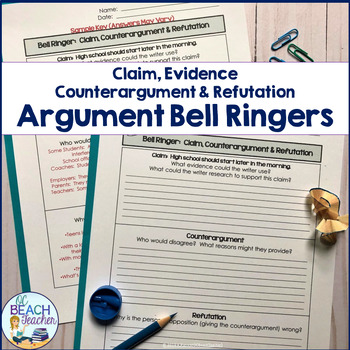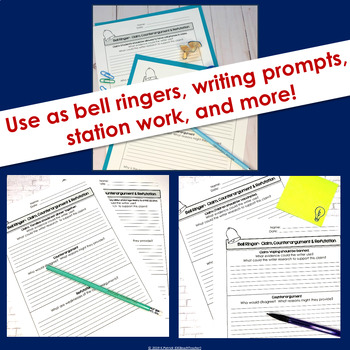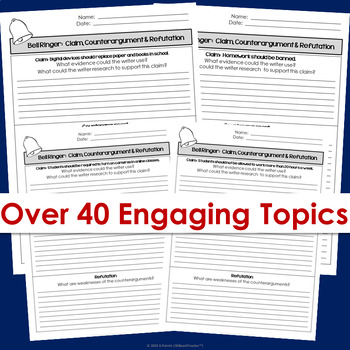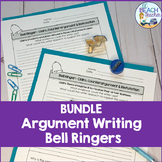Argument Writing Bell Ringers - Claim, Evidence, Counterargument & Refutation
- PDF
- Easel Activity
What educators are saying
Also included in
- Students practice with argumentative writing with these bell-ringer handouts that require them to consider evidence for claims, brainstorm counterarguments, and provide possible refutation. Each handout starts with an engaging topic for adolescents, including some of the following: cameras for videoPrice $6.39Original Price $9.48Save $3.09
- These lessons and activities make teaching argumentative writing and rhetorical analysis easy! Use argument writing bell ringers, an argument research essay unit, rhetorical appeals task cards, research activities, paired texts, graphic organizers, and a rhetorical appeals trashketball game to diffePrice $25.19Original Price $62.14Save $36.95
Description
Students practice argumentative writing with these bell-ringer handouts that require them to consider evidence for claims, brainstorm counterarguments, and provide possible refutation. Each handout starts with an engaging topic for adolescents, including some of the following:
- cameras for online classes
- vaping
- distracted driving
- electronics in class
- the high school dropout age
- employment restrictions for teens
- cyberbullying
- college entrance exam requirements
- public displays of affection
- tanning bed age restrictions
- ADHD medication prescriptions
- TikTok
There are over 40 topics in total (avoiding commonplace topics such as abortion and gun control) and a blank template that allows the teacher or students to write their own claims. If you give one topic per day, these could last you for eight school weeks!
Instructions for using the bell ringers and a sample key for one topic are provided in the resource. Furthermore, several suggestions are provided for using these handouts as other activities including standardized assessment practice. In addition to the printable lesson, this resource may be used for online learning with EASEL by TpT.
Want more prompts for teaching argumentative writing? Here's my newest set of bell-ringers:
Is your classroom paperless? Here are argument writing prompts that you can use with Google Drive or Microsoft OneDrive:
Digital Argument Writing Prompts
Digital Argument Writing Prompts 2
Digital Argument Writing Prompts 3
Digital Argument Writing Prompts 4
Digital Argument Writing Prompts Bundle
Meaningful and Memorable English Language Arts by © OCBeachTeacher ™
All rights reserved by author.
Limited to use by purchaser only.
Group licenses available.
Not for public display.








